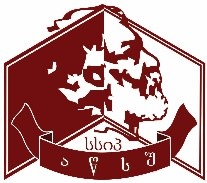"Invisible" Secondary Characters in Ancient Literature
DOI:
https://doi.org/10.52340/atsu.2024.23.01.12Keywords:
ancient literature, secondary invisible characterAbstract
In the traditional sense, a character should be a participant in the story, perform an action, express an attitude towards this or that object or event... This view has changed, to some extent, by those characters who are only mentioned by others, but are connected to any possible option of the development of the story. In the article, we will discuss the secondary characters of the texts of ancient literature, who do not appear in the development of the story, but have a certain, sometimes, even a key function. Moreover, they do not play an episodic role, but even appear throughout the story. This "invisibility" does not necessarily prevent their individualization.
References
არისტოფანე. 2013. კომედიები, XI ტ., („აქარნელები“, „მხედრები“, „ღრუბლები“, „კრაზანები“) თარგმანი ლევან ბერძენიშვილისა, ბაკურ სულაკაურის გამომცემლობა.
ევრიპიდე. 2022. ტრაგედიები: „ალკესტისი“, „მედეა“, „ჰერაკლიდები“, „ჰიპოლისტოსი“, „ანდრომაქე“, „ჰეკაბე“, „მავედრებელი ქალები“, თარგმანი ნანა ტონიასი, გამომცემლობა პალიტრა L.
ევრიპიდე. 2022. ტრაგედიები: „ჰერაკლე“, „ტროელი ქალები“, „ელექტრა“, „ფინიკიელი ქალები“, „ორესტესი“, „ბაკქი ქალები“, „იფიგენია ავლისში“, თარგმანი ნანა ტონიასი, გამომცემლობა პალიტრა L.
ელინისტური და რომაული კომედია. 2013. ტ. XVIII, ტიტუს მაკკიუს პლავტუსი, „ფსევდოლი“ (თარგმანი იამზე გაგუასი), პუბლიუს ტერენციუს აფერი „საჭურისი“ (თარგმანი მანანა ფხაკაძისა), მენანდროსი, „დისკოლოსი“ (თარგმანი მანანა ფხაკაძისა), ბაკურ სულაკაურის გამომცემლობა.
რატიანი, ი. 2023. ტრაგედია - უძველესი ლიტერატურული ჟანრი. ლიტერატურული ჟანრები I. თბილისი.
სოფოკლე. 2021. აიასი. მთარგმნელი გიორგი კახიშვილი, თბილისი.
ჩიხლაძე, ნ. 2003. ამაძონობის მოტივი ანტიკურ ლიტერატურაში, „ლოგოსი“, თბილისი.
წერედიანი, ა. 2023. ანტიკური რომანი, ლიტერატურული ჟანრები ტ. I, თბილისი.
ჰელიოდორე. 2008. ეთიოპიკა, მთარგმნელი გიგლა სარიშვილი, თბილისი.
Daniel, Hack. 2017. „Fictional Character: Response, Victorian Studies“, Vol. 59, No. 3, Papers and Responses from the Fourteenth Annual Conference of the North American Victorian Studies Association.
Ruth, Franklin, Maayan, Pearl. 2019. „Character Development“, Foreign Policy, No. 209.
Gregory, Currie. 2009. “Narrative and the Psychology of Character”. The Journal of Aesthetics and Art Criticism, Vol. 67, No. 1, Special Issue: The Poetics, Aesthetics, and Philosophy of Narrative, pp. 61-71.
Omar, Altalib. 2013. “Character and Personality”, From: Parent-Child Relations: A Guide to Raising Children, International Institute of Islamic Thought.
David, Carr. 2014. “Four Perspectives on the Value of Literature for Moral and Character Education”, The Journal of Aesthetic Education, Vol. 48, No. 4.





